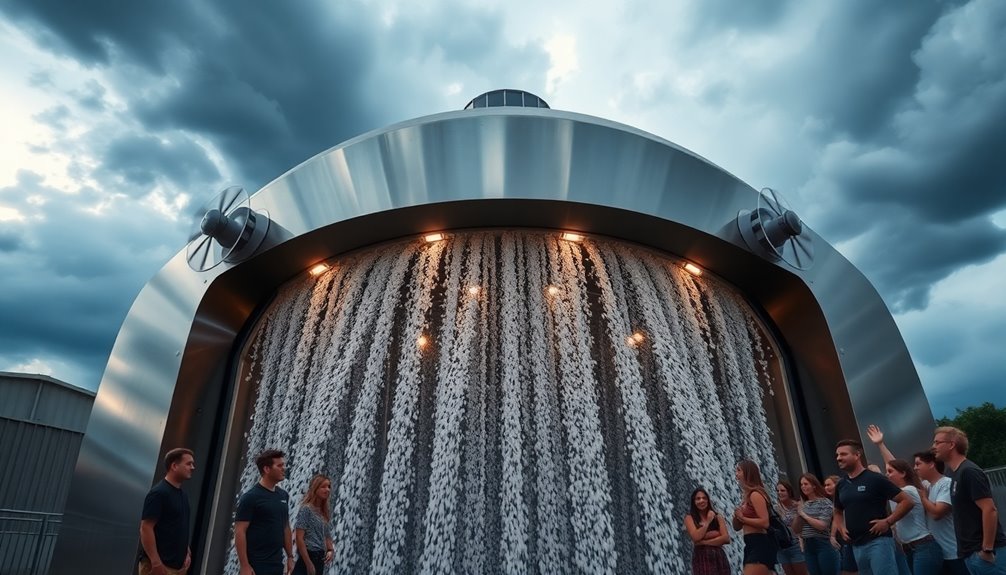You can step into the eye of a storm with a hurricane simulator machine near you. This immersive experience simulates a Category 1 hurricane, allowing you to feel the real effects of wind speeds between 74-95 mph. It's not just thrilling; it also offers a hands-on way to understand complex meteorological concepts. Whether you're organizing an event or looking for a unique education opportunity, customizable options are available. This enticing attraction generates excitement and sparks discussions about weather phenomena. Want to discover more about what's involved in experiencing a hurricane firsthand?
Key Takeaways
- Experience a realistic category 1 hurricane in a simulator, perfect for educational and entertainment purposes for all ages.
- Customizable graphics and themes are available for events, enhancing branding and user engagement.
- Flexible scheduling options allow for easy integration into various event timelines without hidden fees.
- The simulator provides hands-on learning about storm dynamics, making complex meteorological concepts enjoyable and memorable.
- Engage with knowledgeable staff who can facilitate discussions about hurricane preparedness and safety measures during the experience.
Overview of the Hurricane Simulator
The Hurricane Simulator offers an immersive experience that lets you feel the power of a category 1 hurricane firsthand. This unique attraction is designed for various audiences, including schools and meteorological events, making it an ideal educational tool for both children and adults. As you step inside, you'll engage with the storm, learning about its dynamics in a fun and interactive way.
The simulator combines entertainment with educational value, ensuring you retain key meteorological concepts long after the experience. It captivates users by immersing them in realistic wind speeds, allowing them to understand the effects of a hurricane up close. This is not just a thrill ride; it's a chance to spark discussions about weather phenomena and their impacts on our world.
Whether you're at a school event or a community fair, the Hurricane Simulator serves as a focal point for workshops and presentations, promoting awareness about hurricanes. With its engaging format, it encourages curiosity and learning. By experiencing this innovative educational tool, you'll leave with a deeper appreciation of nature's power and the science behind it.
Customization Options Available
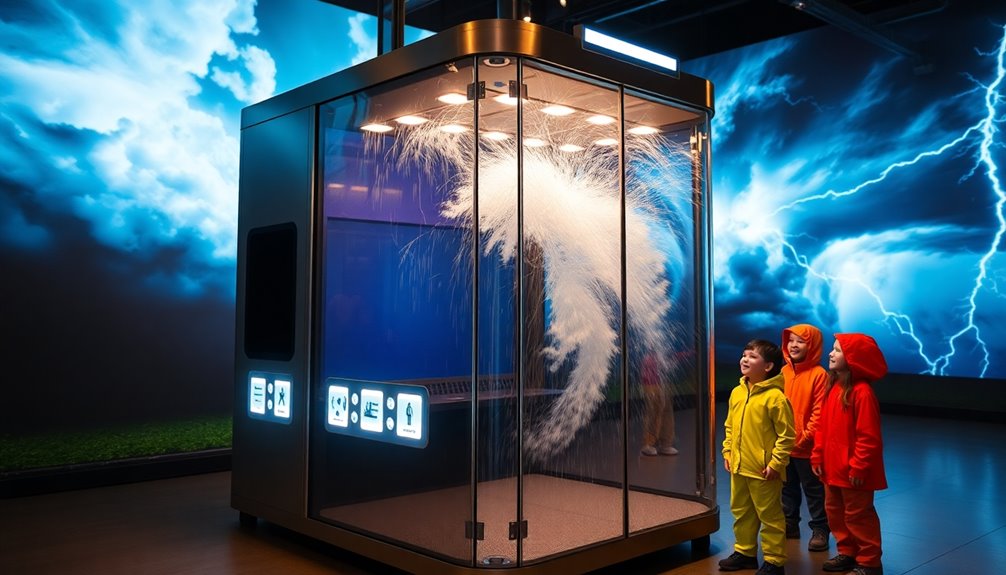
Customization options for the Hurricane Simulator enhance the overall experience, allowing you to tailor it to your specific event or audience. You can incorporate custom graphics that feature your event logos and color schemes, effectively enhancing your branding. The design team works closely with you to create a tailored experience that promotes your specific event or theme, ensuring it stands out.
If you're looking for inspiration, a diverse design gallery is available, showcasing previous client samples and customizable templates. This resource lets you see what's possible and helps you decide on the best fit for your audience. For businesses with in-house design teams, there's even more flexibility. You can modify existing templates or create entirely new designs to suit your needs.
To get started, reach out to the design team to discuss your vision and respond as soon as possible to ensure your preferences are integrated. With these customization options, you'll create a memorable and engaging experience that resonates with all participants, making your event a hit. Don't wait—explore these options soon to make the most of your Hurricane Simulator experience!
Benefits for Educational Events

Incorporating a Hurricane Simulator into educational events can transform the way participants engage with meteorological concepts. This hands-on experience creates memorable moments that enhance learning and retention, allowing you to grasp complex ideas about storms in an interactive way. As you step into the simulator, you'll feel the thrill of a category 1 hurricane, making the dynamics of storms tangible and accessible.
By sparking interest in meteorology and environmental science, the simulator encourages discussions and inquiries among attendees. Whether you're a child or an adult, this engaging attraction serves as a focal point for workshops and presentations, fostering a stimulating environment where questions flow naturally.
The excitement generated by the simulator elevates the overall experience, making it more impactful and memorable for everyone involved. You'll find that participants leave with a deeper understanding of weather phenomena, inspired to explore further. Incorporating the Hurricane Simulator not only captivates your audience but also enhances their educational journey, paving the way for a greater appreciation of the science behind storms. In essence, it's more than just a demonstration; it's an opportunity for discovery and engagement that can ignite a passion for learning.
Booking the Hurricane Simulator
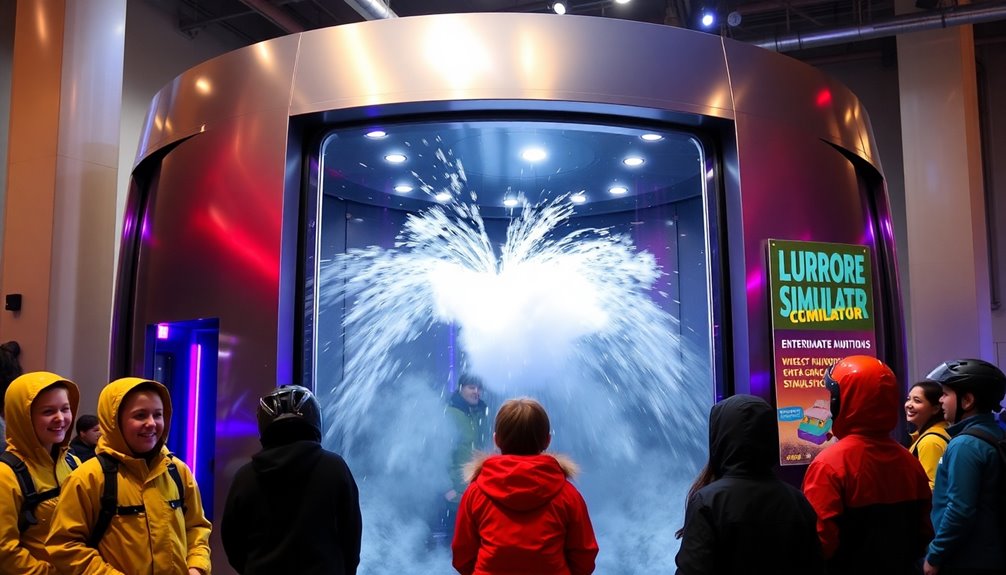
Booking the Hurricane Simulator is a breeze, thanks to its flexible scheduling options designed to fit a variety of event timelines. Whether you're planning a school event, corporate gathering, or community festival, you can easily secure your spot. Inquiries are straightforward, too; you can reach out directly via phone at (813) 402-0487 or fill out the online inquiry form to discuss your event planning.
One of the highlights of booking the simulator is that there are no hidden fees or charges. This ensures you have a transparent booking experience, allowing you to plan without any surprises. Plus, if your event needs change, you'll appreciate the month-to-month agreements available. This flexibility accommodates varying requirements, making it easier for you to adjust as needed.
You won't have to wait long for a response, either. The team guarantees prompt replies to all booking inquiries, which means you can quickly move forward with your event planning. With these straightforward options and clear communication, you're all set to bring the excitement of the Hurricane Simulator to your next event!
Promotional Impact of the Attraction
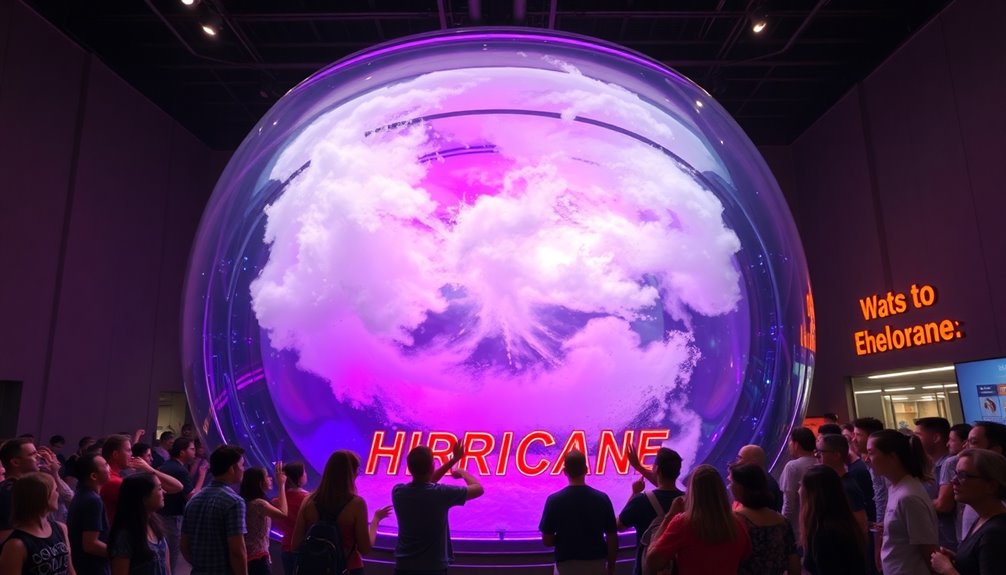
How does the Hurricane Simulator create a buzz at educational events? It generates significant excitement, attracting more attendees and enhancing overall participation. Unlike typical presentations, the simulator stands out as a unique attraction that captures the attention of both children and adults, making it a memorable highlight.
This hands-on, interactive experience doesn't just entertain; it also encourages word-of-mouth promotion among attendees. When people have fun and learn simultaneously, they're likely to share their experiences, sparking increased interest in future educational initiatives and events. You'll find that its presence serves as a fantastic talking point for discussions about meteorology, boosting the educational value of the entire event.
As participants engage with the simulator, they experience hurricanes in a way that's both thrilling and informative. This unique approach ensures that learning about such a complex topic remains engaging and impactful. The buzz created around the Hurricane Simulator not only enriches the current event but also lays the groundwork for future educational opportunities, ultimately fostering a deeper understanding of meteorological phenomena. Embrace the excitement and see how it transforms educational gatherings into memorable experiences!
Building a Hurricane Simulation

The excitement generated by the Hurricane Simulator naturally leads to an interest in building a hurricane simulation that captivates users. You'll start by allowing users to drag and manipulate the hurricane, showcasing how surface temperatures directly impact storm intensity and behavior. Incorporating high-pressure areas will let users observe how they influence the paths and wind patterns of the simulated hurricane, grounding their experience in real-world meteorological concepts.
Next, consider seasonal changes in ocean temperatures, which play a critical role in hurricane formation and development. By integrating this feature, users can see firsthand how variations in temperature can alter storm characteristics. Additionally, offering the option to reset the simulation lets users explore different hurricane scenarios and outcomes, enhancing their understanding of the dynamic nature of these storms.
To provide context, you can reference historical hurricanes, such as Hurricane Sandy in 2012. This connection helps users grasp the potential impact and characteristics of real storms, making the simulation not only engaging but also educational. By thoughtfully designing these elements, you can create a hurricane simulation that's both interactive and informative.
Understanding Hurricane Categories
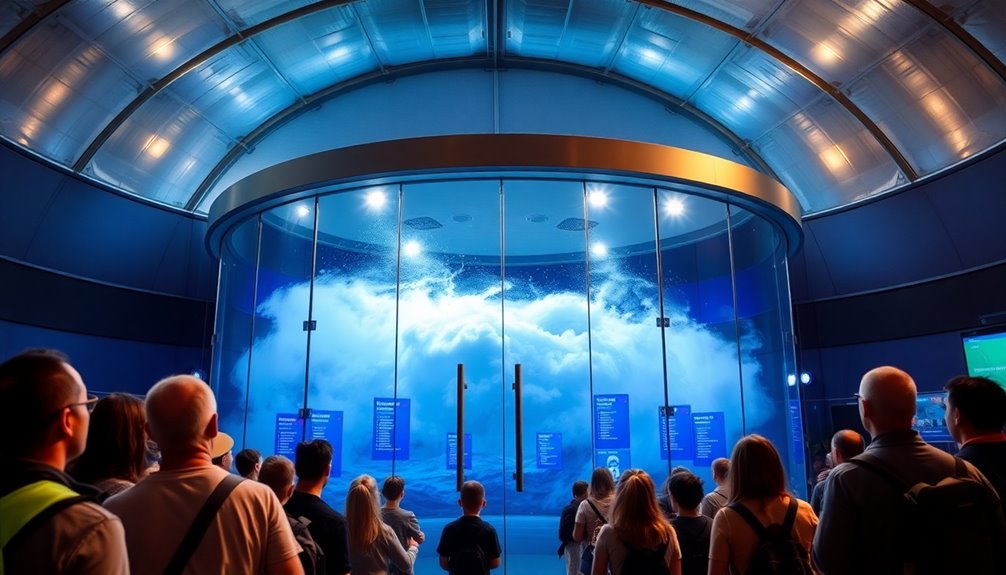
Understanding hurricane categories is essential for anyone wanting to grasp the potential impact of these powerful storms. The Saffir-Simpson scale classifies hurricanes into five categories based primarily on wind speeds and the damage they can cause. A Category 1 hurricane, with wind speeds of 74-95 mph, may inflict minor damage and lead to power outages lasting several days. In contrast, a Category 5 hurricane, exceeding 157 mph, can result in catastrophic destruction, rendering areas uninhabitable.
The category designation plays a vital role in emergency preparedness. As the category number increases, so does the storm's destructive potential, necessitating more extensive evacuation measures. Each hurricane is also labeled with an "L" for low pressure, indicating its intensity, which helps you understand the storm's potential impacts.
This classification system not only informs you about the severity of a hurricane but also aids meteorologists in forecasting and communicating risks. By understanding these categories, you can better prepare for the safety challenges posed by hurricanes and make informed decisions during storm events.
Assessing Wind Speeds and Damage
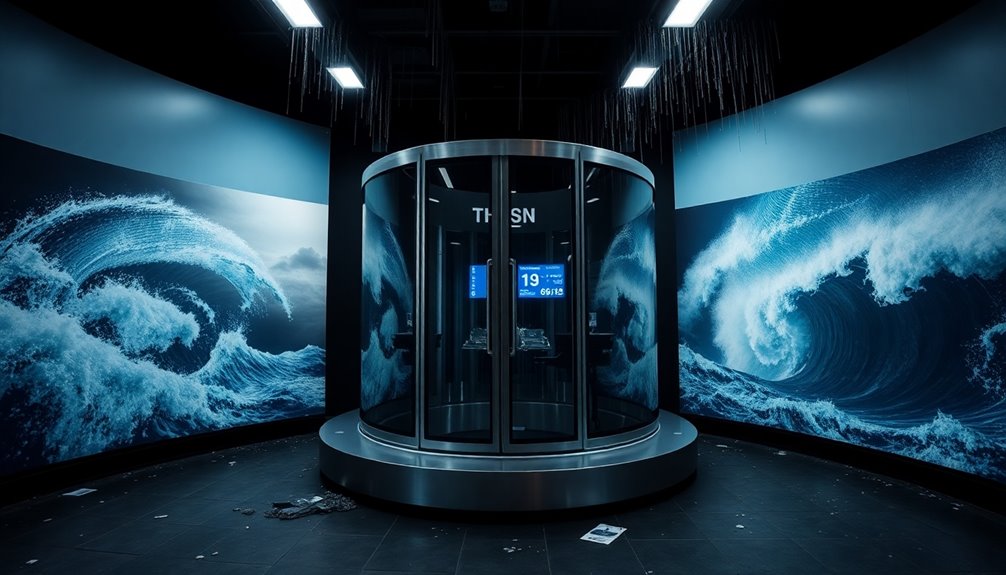
When assessing wind speeds and the resulting damage from hurricanes, it's crucial to consider the specific thresholds that define each category. Winds ranging from 74 to 95 mph can inflict minor damage to homes, potentially leading to power outages that last for days. As the wind speeds increase to between 96 and 110 mph, you might witness extensive damage, including uprooted shallow-rooted trees.
When winds hit the 111 to 129 mph range, expect devastating damage to well-built homes and roadblocks from downed trees. The destruction intensifies with wind speeds of 130 to 156 mph, resulting in catastrophic damage and long-term power outages. If you find yourself facing a hurricane with wind speeds of 157 mph or higher, prepare for seriously catastrophic destruction. Homes may become uninhabitable, and widespread devastation will occur.
Understanding these wind speed thresholds is essential for your safety and preparedness. By knowing what to expect at each level, you can better assess your situation and take necessary precautions. Remember, preparation is key when facing the fury of a hurricane.
Predicting Hurricane Paths

Predicting hurricane paths is a complex task that requires analyzing a mix of historical data and current atmospheric conditions. Each hurricane behaves uniquely, which makes precise path predictions challenging. To forecast future storm trajectories, meteorologists rely heavily on historical storms, as they provide critical data on previous paths and landfall characteristics.
Understanding these paths is crucial for effective risk assessment and evacuation planning. By knowing where a hurricane is likely to strike, you can take necessary precautions to protect yourself and your community. Accurate path prediction also allows emergency services to implement timely safety measures before a storm's arrival, ensuring public safety.
Visual resources, such as maps and simulations, can enhance your understanding of predicted hurricane paths and their behavior. These tools help you grasp complex data more easily, allowing you to stay informed and prepared. By staying updated on hurricane predictions, you can better anticipate the storm's impact and make informed decisions about evacuation or sheltering in place. Ultimately, understanding hurricane paths empowers you to navigate the dangers of these powerful storms effectively.
Resources for Further Learning
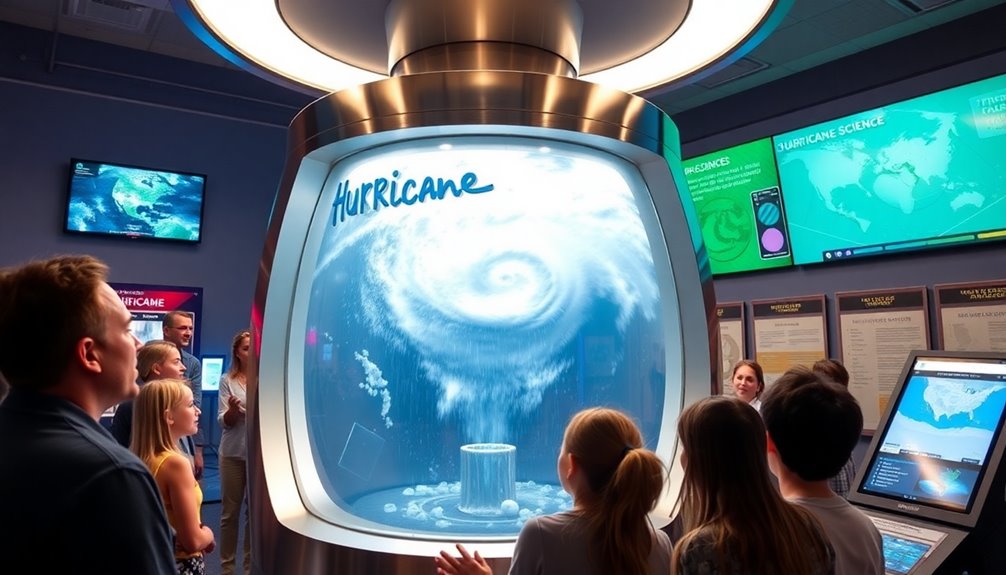
Exploring resources for further learning about hurricanes can significantly enhance your knowledge and preparedness. Start with the educational materials provided by NOAA and the National Hurricane Center. They offer detailed insights into hurricane formation, categories, and effective preparedness strategies that everyone should know.
Consider visiting the Hurricane Simulator, where interactive experiences help you grasp storm dynamics and meteorological concepts firsthand. This hands-on learning can be invaluable in understanding how hurricanes behave.
To deepen your understanding, delve into historical data on past hurricanes. Analyzing their paths and impacts will aid you in risk assessment and emergency planning. Don't forget to sign up for newsletters from trusted sources. They'll keep you updated on hurricane-related news and new educational materials throughout the season.
Frequently Asked Questions
Where Is the Hurricane Machine?
You'll find the hurricane machine at 2804 North 36th Street in Tampa, FL. It's located in a shopping mall, making it easy for you to access and enjoy the exciting simulation experience.
How Many Mph Is Hurricane Simulator?
The hurricane simulator replicates wind speeds between 74 and 95 mph, demonstrating minor damage effects. You'll see how different speeds impact structures, helping you understand the severity of real hurricanes and emergency preparedness.
Conclusion
Experiencing a hurricane simulator is an unforgettable way to learn about storms firsthand. You get to customize your experience, making it both fun and educational. It's perfect for events, helping everyone understand the power of nature while also enjoying themselves. Plus, with resources available for further learning, you can deepen your knowledge about hurricanes. Don't miss out on this thrilling opportunity to see what it's like to be in the eye of the storm!
